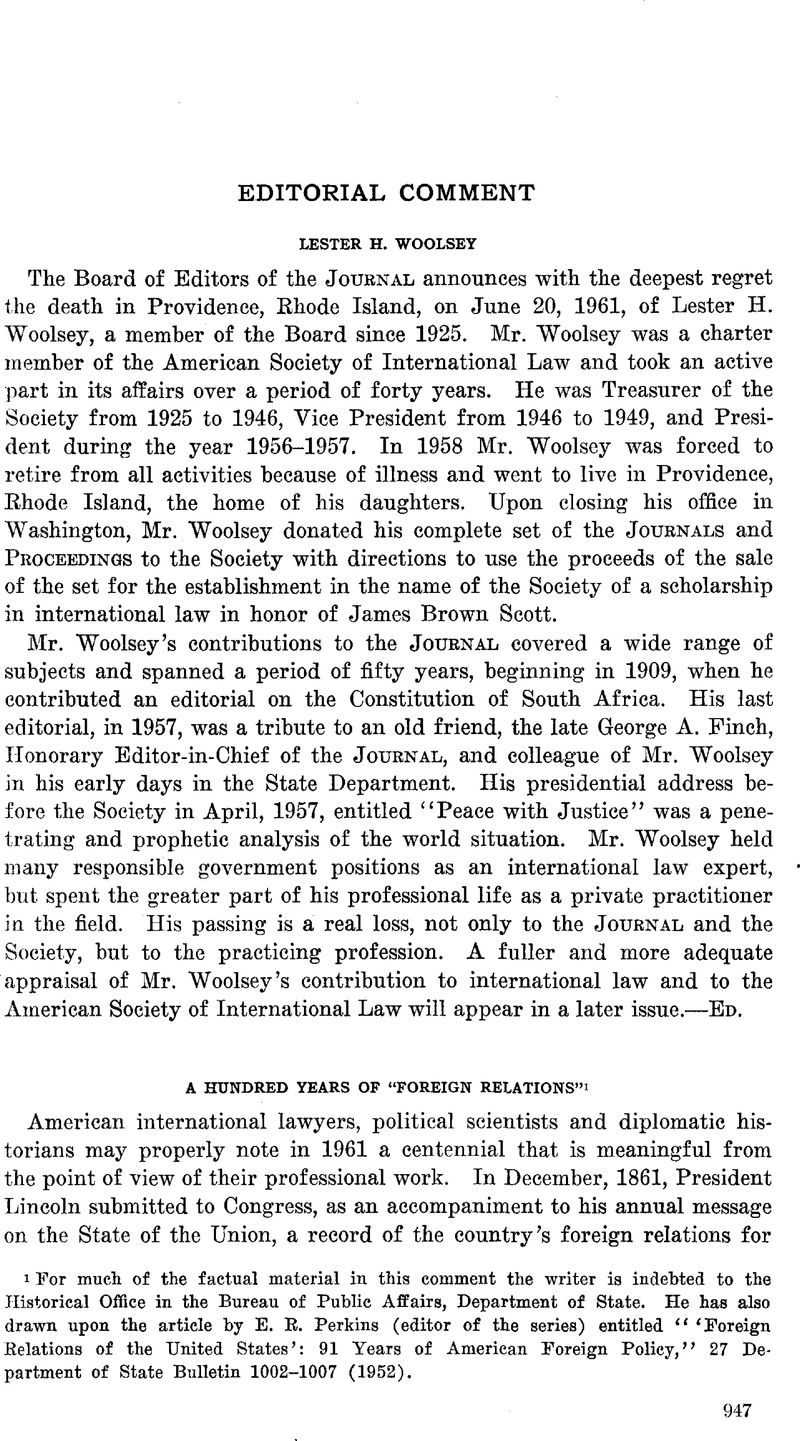No CrossRef data available.
Published online by Cambridge University Press: 28 March 2017

1 For much of the factual material in this comment the writer is indebted to the Historical Office in the Bureau of Public Affairs, Department of State. He has also drawn upon the article by Perkins, E. R. (editor of the series) entitled “‘Foreign Relations of the United States’: 91 Years of American Foreign Policy,” 27 Department of State Bulletin 1002-1007 (1952)Google Scholar.
2 Papers Relating to Foreign Affairs, Ex. Doc. No. 1, 37th Cong., 2nd Sess. The correspondence in this volume dealt largely with problems relating to the War Between the States.
There was not, prior to this time, a regular annual publication of such material, although, in response to requests from Congress from time to time the Department of State provided records that were published in Congressional documents. Annual messages of the Presidents before 1861 were sometimes accompanied by diplomatic dispatches on special subjects which the President desired to bring to the attention of Congress; those which were printed are available in Wharton’s Eevolutionary Diplomatic Correspondence and in American State Papers. See Boyd, Anne Morris, United States Government Publications 127 (3rd ed., 1949)Google Scholar.
3 Included are nine volumes of World War I Supplements, three volumes on Russia, 1918, one volume on Russia, 1919, thirteen volumes on the Paris Peace Conference, 1919, two volumes of Lansing Papers, 1914-1920, one volume on The Soviet Union, 1933-1939, two volumes on Japan, 1931-1941, one on China, 1942, one on The Conference at Cairo and Teheran, 1943, one on The Conferences at Malta and Yalta, 1945, and two volumes on The Conference at Berlin (the Potsdam Conference), 1945. There have been two general index volumes, one published in 1902 and covering the years 1861-1899, the other published in 1941 and covering the years 1900-1918.
4 Foreign Relations, 1914, Supp., pp. iii-iv (published in 1928).
5 Ibid., 1939, Vol. I (published in 1956), pp. iii, iv.
6 Idem. Those allowable: “(a) The avoid publication of matters which would tend to impede current diplomatic negotiations or other business, (b) To condense the record and avoid repetition of needless details, (c) To preserve the confidence reposed in the Department [of State] by individuals and by foreign governments, (d) To avoid giving needless offense to other nationalities or individuals, (e) To eliminate personal opinions presented in despatches and not acted upon by the Department. To this consideration there is one qualification—in connection with major decisions it is desirable, where possible, to show the alternatives presented to the Department before the decision was made.”
7 E. R. Perkins, loc. cit. 1005 ; cf. Moore, John Bassett, “The Dictatorial Drift,” 23 Virginia Law Review 863, 865 (1937)CrossRefGoogle Scholar.
8 Department of State Press Releases, Jan. 25, 1936, pp. 99-100.
9 See examples in Wilson, Robert R., “Government Consent to Publication of Diplomatic Correspondence,” 34 A.J.I.L. 508-511 (1940)Google Scholar.
10 Cf. E. R. Perkins, loc. cit. at 1005.